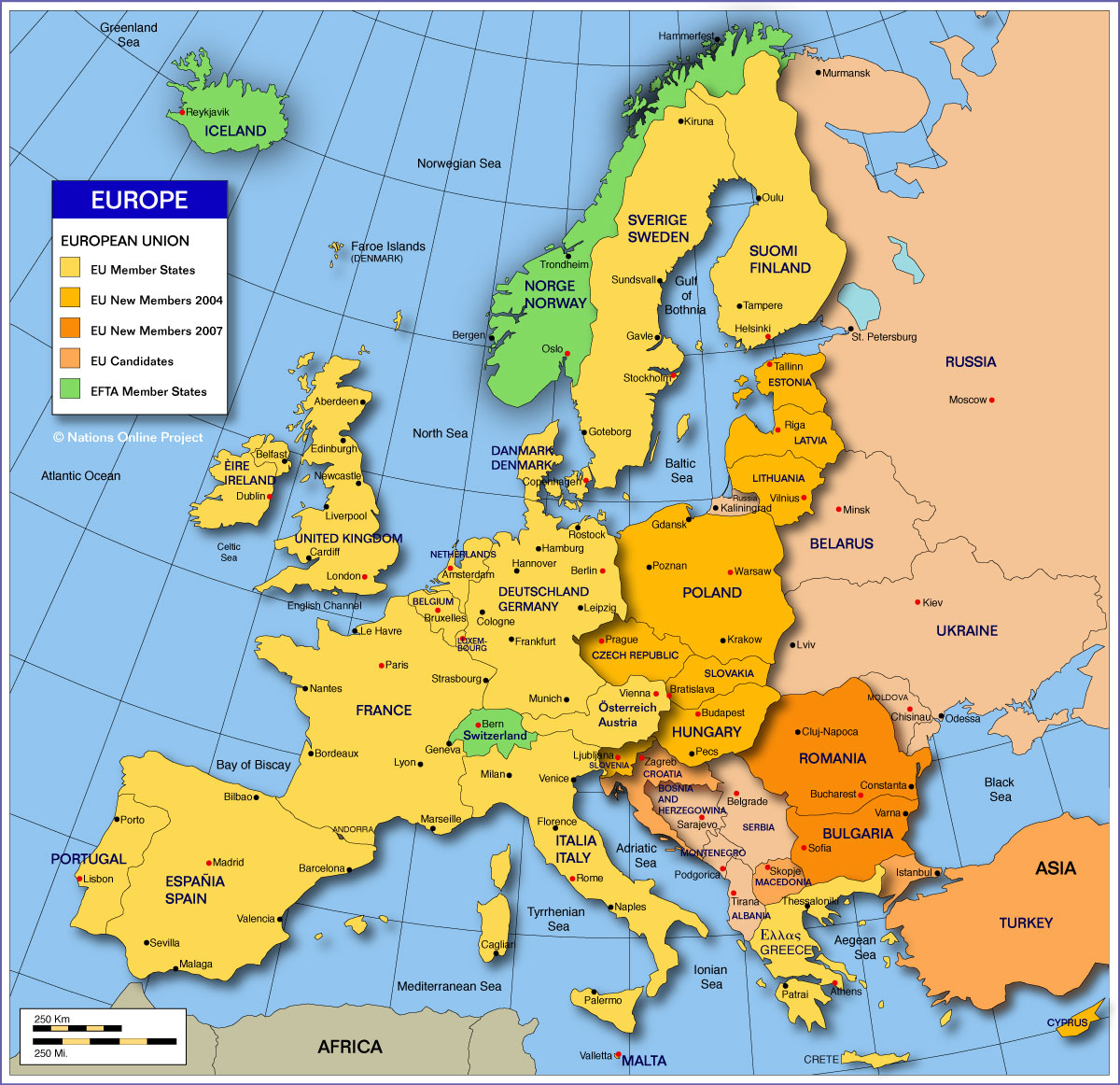
Source: nationsonline.org
A survey of economists by Dow Jones Newswires had forecast a Eurozone month-over-month decline of -0.2% and a year-over-year drop of -3.7% for May.
Among Eurozone members, the only industry to post a lower month-over-month change was energy production, down -2.3% in May. Non-durable consumer goods production rose 1.7% in the Eurozone, and capital goods production rose 0.9%.
Year-over-year Eurozone production showed a decline in all categories, with durable consumer goods production down the most at -6.4%.
German production was up 1% month-over-month, but down -0.2% year-over-year. Spain showed a month-over-month increase of 0.6%, but a drop of -6.1% year-over-year. Production in Greece rose 0.3% month-over-month, but fell-2.8% year-over-year. In Italy, production was up 0.8% month-over-month and down -6.9% year over year.
The largest monthly gain was recorded in Portugal, up 4.1%, and the largest annual gain totaled 12.8% in Norway, likely a reflection of higher crude oil prices.
The Eurostat data is kind of a “the glass is half full, the glass is half empty” report. Among Eurozone members the comparisons with industrial production a year ago have been consistently negative with the exception of capitals good production, which turned negative in April and stayed negative in May.
While the month of May showed some unexpected improvement, the annual decline has been growing steadily. If this is the road to recovery in Europe, it is paved with obstacles.
The Eurostat report is available here.
Paul Ausick
Essential Tips for Investing: Sponsored
A financial advisor can help you understand the advantages and disadvantages of investment properties. Finding a qualified financial advisor doesn’t have to be hard. SmartAsset’s free tool matches you with up to three financial advisors who serve your area, and you can interview your advisor matches at no cost to decide which one is right for you. If you’re ready to find an advisor who can help you achieve your financial goals, get started now.
Investing in real estate can diversify your portfolio. But expanding your horizons may add additional costs. If you’re an investor looking to minimize expenses, consider checking out online brokerages. They often offer low investment fees, helping you maximize your profit.
Thank you for reading! Have some feedback for us?
Contact the 24/7 Wall St. editorial team.



